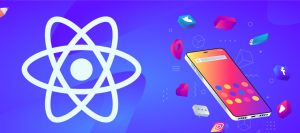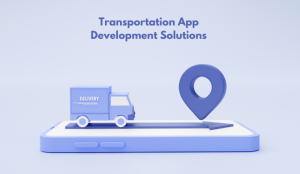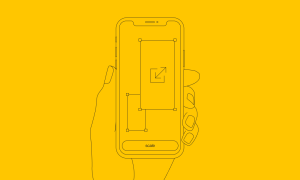Features to Integrate for Successful Fitness App Development

Fitness apps are all the rage these days, given the growing awareness regarding healthcare and lifestyle diseases.
The fitness app market has crossed 1.1 billion globally, with a projected annual growth rate of over 17%. The US fitness app market alone is valued at approximately $390 million – a number expected to rise at a 16.2% CAGR over the decade.
Fitness app development has gotten in demand as a result, and app stores are filled with several types of fitness apps for a range of devices out there. Deciding what type of app to build can be challenging.
While the right fitness app development company can help you be part of this constantly-evolving market, you’ll need to decide what segment you want to focus on before you get started building one.
We will discuss the most popular types of fitness apps and their essential features in this blog to clarify some confusion.
Types of Fitness Apps Popular These Days
App stores offer a wide range of fitness apps for fitness enthusiasts, the trending ones among which are given below. This list will help you understand what currently works in the market and what the end user is looking for:
#1. Nutrition and Calorie Tracking Apps
Many people have started paying attention to what and how much they eat, often searching online for ways to track their calorie consumption. This growing search has led to the market’s rise of nutrition and diet planning apps. Apps providing one or more of the following features fall into this segment:
- Weight gain/loss tips
- Calorie counting
- Meal planning
- Special diets and nutrition guidance include vegan, vegetarian, diabetes, fitness, pregnancy, etc.
- Consultations with diet coaches.
Apps with comprehensive features include all the above and help users gain control over their food and drink intake by setting diet goals and calculating the nutritional value of everything they consume.
#2. Exercise, Training, and Workout Apps
There are apps for nearly every kind of exercise these days, from High-intensity interval training (HIIT) for exercise buffs to less intense workouts for beginners.
These apps are designed to help users maintain a healthy workout regimen, with exercise tutorials for different requirements. Home workouts are particularly gaining importance because of the convenience and results they offer users without having to buy expensive gym training equipment.
You can have a mobile app development company build one from several sub-categories in training and exercise apps, such as
- Exercise Combined With Yoga: These combine different workout styles, such as Pilates and interval training, with yoga asanas to create customized routines.
- Personal Trainer: These include, but are not limited to, one-on-one training from professional coaches. They may offer personalized training regimes and curated workouts from famous athletes and sports celebrities. Users have the option to set up their schedules and switch to the workout most suitable for them.
#3. Activity Or Fitness Tracking Apps
These are especially useful in wearable devices like smartwatches. These cover one or more sports, such as walking, running, cycling, swimming, yoga, etc. They enable users to keep track of their steps, heart rate, etc., through sensors that analyze different movements, such as
- Accelerometers for mobility-related data
- Temperature and heart rate sensors
- Altimeters that track atmospheric pressure and convert data for accurate information on steps and calories.
- GPS to track the wearable device or smartphone’s location.
#4. Meditation And Mindfulness Apps
Physical and mental well-being go hand in hand, and people are increasingly growing aware of the connection between the two. Therefore, apps geared toward promoting mindfulness through meditation and other self-care activities also belong on this list.
These work by allowing users to take a step back and relax from their rushed lifestyles through various meditation practices. For instance, users can practice breathing or guided meditation with a curated list playing in the background. Apps that fall into this category include the following:
- Guided Meditation: These mostly cater to beginners, offering plenty of meditation exercises with helpful animation and calming aesthetics.
- Relaxation: People suffering from insomnia, anxiety, and other such disorders can benefit from the pleasing visuals and calming background music in relaxation apps. These are designed to help people relieve their stress, relax, and refocus on their tasks or goals.
- Meditation: These help users improve various aspects of their mental health, keeping them engaged in the areas they want to improve, such as relationships or careers, using beautifully designed interfaces, customizable meditation sessions, exclusive meditation libraries, and access to private communities.
Must-Have Features In A Successful Fitness App
Every fitness app development company includes the following compulsory features when building an app for their client:
User Registration
Every user needs to sign up before they can begin using the app. The registration process needs to be simple, or the user may want to leave out of frustration. It typically requires the user to enter basic details, such as name, email id, password (to set up), and similar information to create an account.
User-Friendly Interface
The more intuitive the User Interface of an app, the longer it can engage users. The same is true for a health and fitness app designed to assist users from different walks of life with their app and wearable use.
Multi-Device And Platform Compatibility
Customers often appreciate the ability to use their favorite apps across every platform and device they own. Compatibility across multiple platforms and devices is important for this reason, and it makes user data accessible at all places and times. It is easier to use an app that can incorporate as many smart devices and wearables as possible, so make sure to ask your fitness app development company about this.
Rewards And Bonuses
Incentives and rewards can improve your workout schedule, just as a perks & rewards program can enhance your shopping experience. Several examples of apps offer different types of rewards to users who achieve their fitness goals, including crypto tokens.
Personalization
Ideally, fitness and health apps should allow users to customize them according to their needs. A user profile must contain sufficient information regarding their age, gender, BMI influencing factors (body weight and height), and health goals.
The apps must be able to produce personalized fitness routines, diet plans, workout plans, and daily progress reports based on the data collected.
Activity Log
It is important for fitness apps to keep track of their users’ activities because the log feature can help them create a productive workout regimen. The use of a calendar and a workout log can improve training results, as users can make the right changes through proper analytics.
Geolocation
Users can observe their progress over time by using geolocation to track their steps, cycle routes, and running routes.
Chat With Professionals
Getting personalized fitness solutions and interacting with fitness experts can turn working out into one of the most fulfilling experiences.
Push Notifications
It is impossible for users to stay on top of their activities, sleep patterns, and eating habits without push notifications. For this reason, fitness apps must send users timely notifications regarding their app goals and activities.
Final Thoughts
Experts recommend working on a Minimum Viable Product or MVP to see whether your idea resonates with the end user and how you can improve it. You can begin with a search for a fitness app development company experienced in helping entrepreneurs build innovative, user-friendly apps. They can make the best recommendations and give you an accurate project cost estimate.






